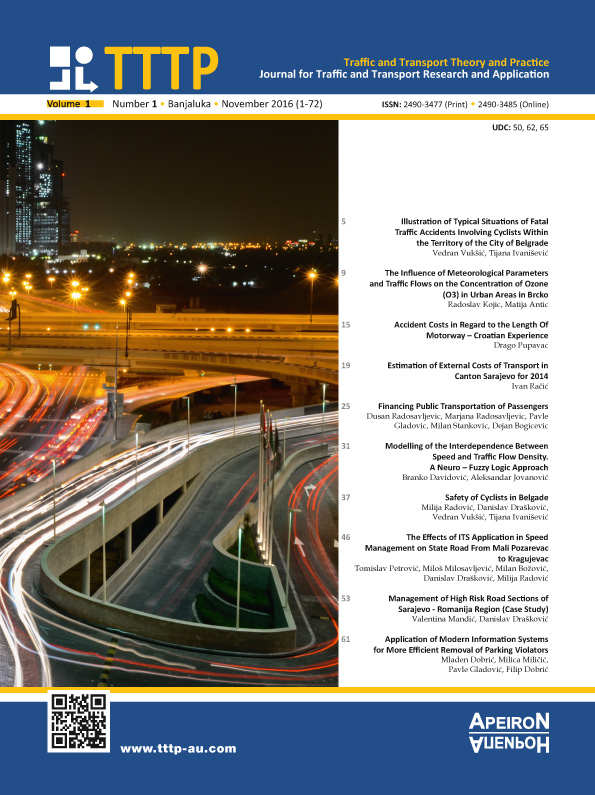The Influence of Meteorological Parameters and Traffic Flows on the Concentration of Ozone (O3) in Urban Areas in Brcko
DOI:
https://doi.org/10.7251/JTTTP1601009KAbstract
Meteorological parameters and traffic flows have a direct impact on air quality in large urban areas, and hence on the quality of life in them. A large number of done surveys confirmed the great dependence of the concentration of ground-level ozone (O3) upon meteorological parameters and the size, structure and imbalances of traffic flows. As part of the research conducted in the period from November 5th to December 8th 2014 in Brcko in Muderis Ibrahimbegic St concentrations of ground-level ozone (O3) were measured, meteorological parameters (temperature, humidity, wind speed and intensity of solar radiation) and characteristics of traffic flow of road motor vehicles. The maximum concentrations of ground-level ozone (O3) in the measurement period was 106.54μg/m³, while the minimum concentration was 4.794μg/m³. By analyzing the results of measurements the high coefficient of correlation between wind speed, air temperature and humidity was established. The correlation coefficient between the traffic flows on the one hand and the concentration of ground-level ozone (O3), on the other hand is very low and does not exceed the value of 0.301. A negative correlation coefficient between traffic flows and concentrations of ground-level ozone (O3) is also observed in the certain time of the day.Downloads
Published
2016-11-28
Issue
Section
Чланци
